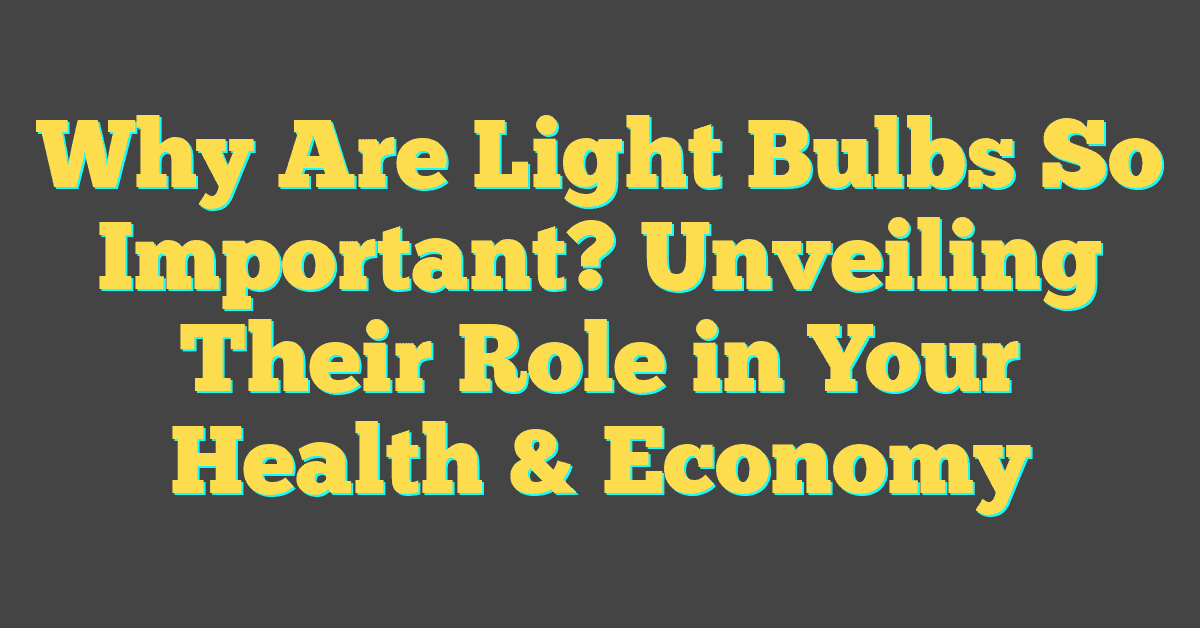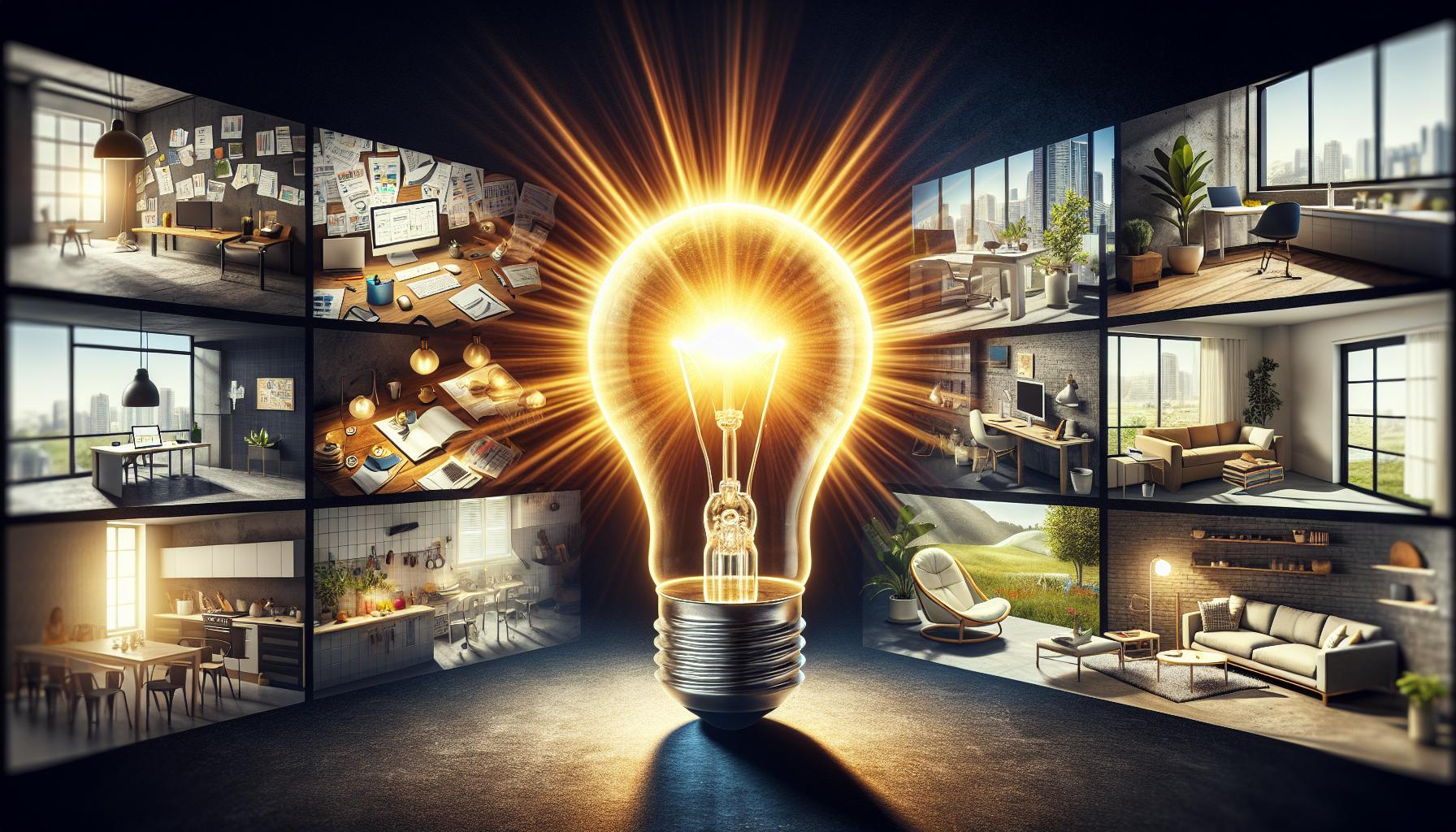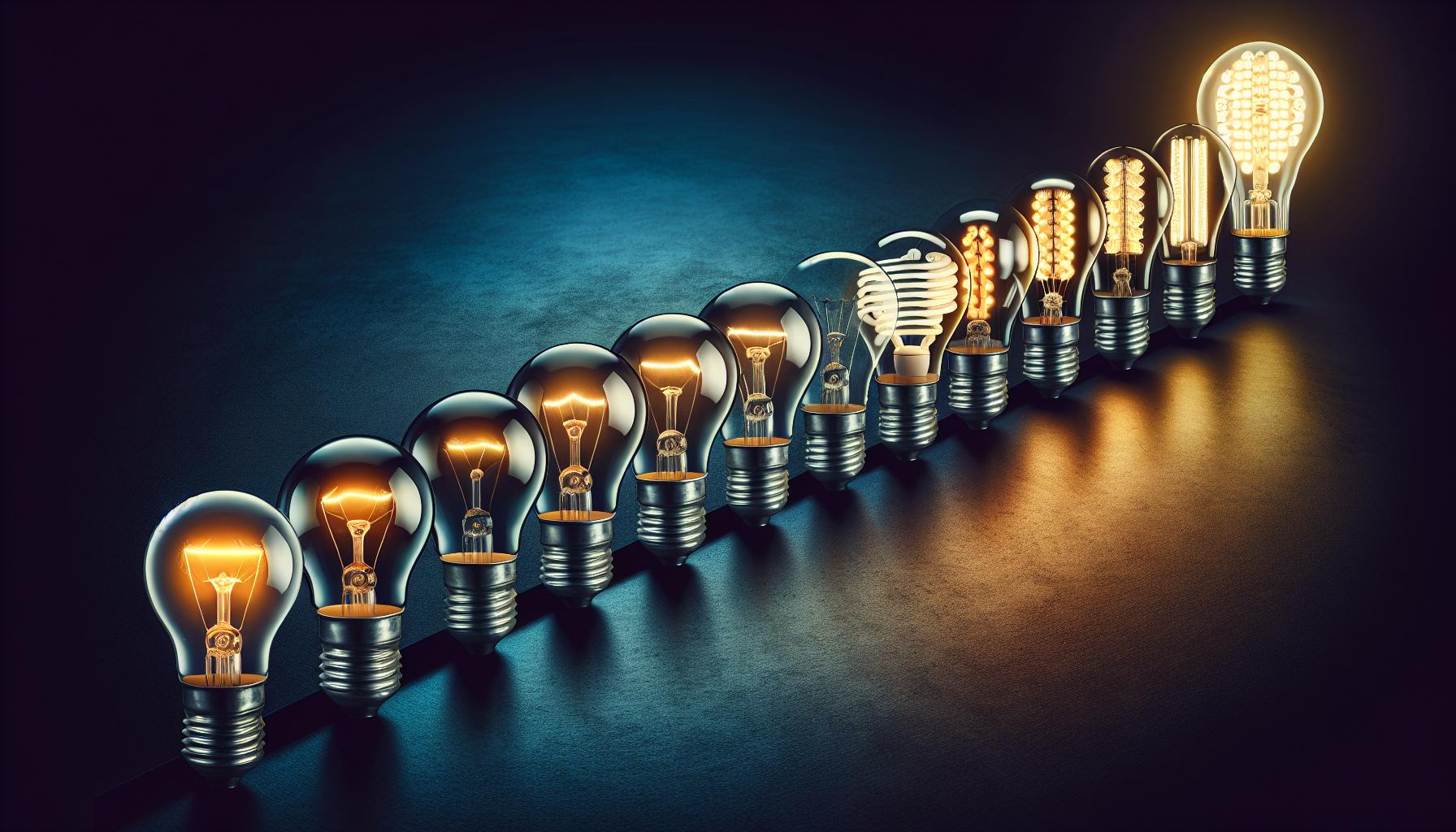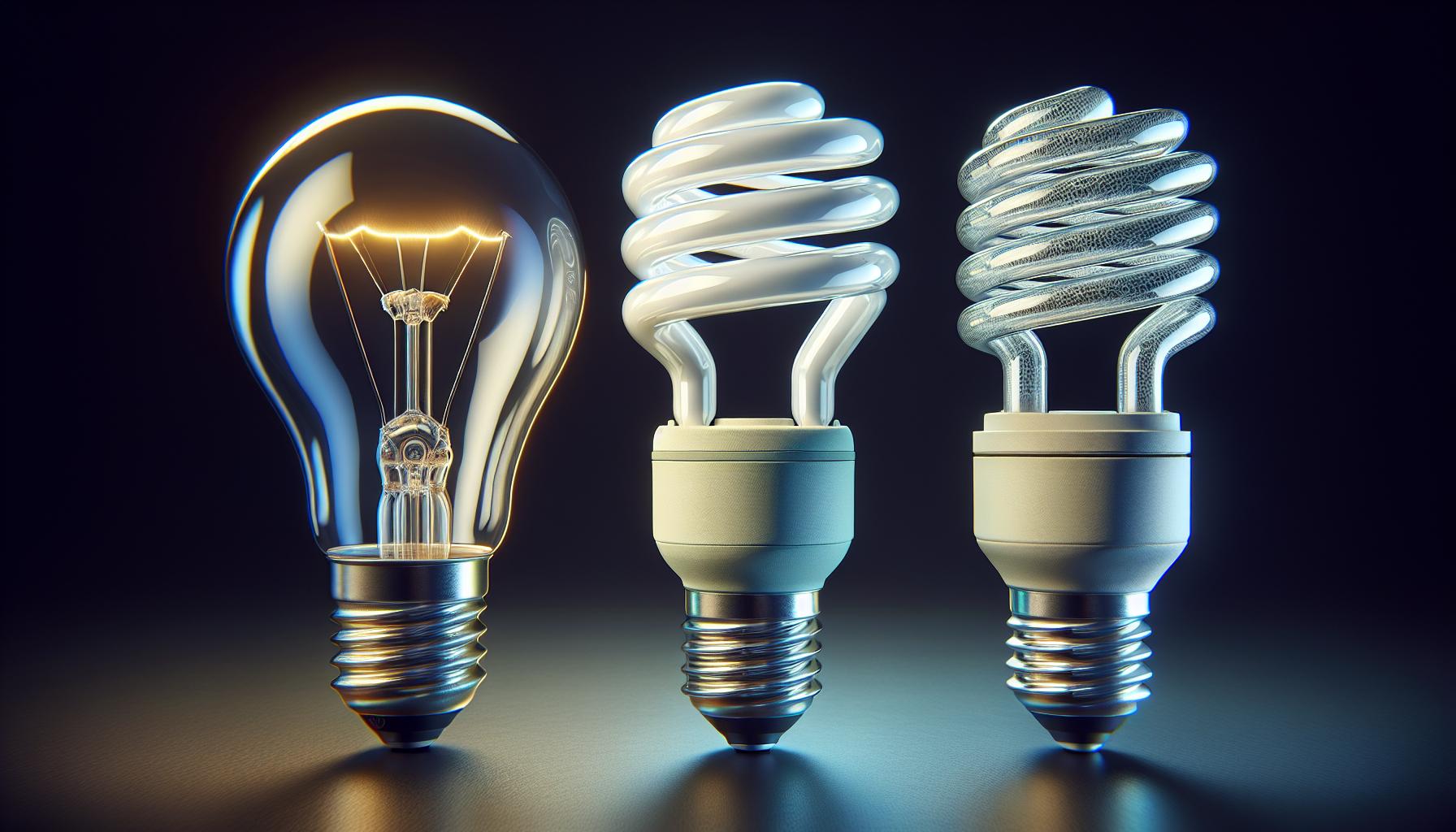Imagine life without the humble light bulb. You’d be winding down as the sun sets, with only candles or oil lamps to push back the darkness. It’s hard to believe that before the late 19th century, that was the norm. Light bulbs have revolutionized the way you live, work, and play, turning night into day at the flick of a switch.

These glowing orbs of innovation have become so integral to your daily life that you often take them for granted. But think about it—they’ve not only brightened homes and streets but also sparked a cultural and economic transformation worldwide. Light bulbs have extended your productive hours well beyond what nature dictates and have become a symbol of ideas and innovation.
Their importance stretches far beyond illumination; they’ve become a beacon of human progress. So, let’s shed some light on why these everyday wonders are so crucial to your modern existence.
The Evolution of Lighting Technology
From the crackling of the first campfire to the soft glow of an LED, you’ve witnessed an incredible journey in the evolution of lighting technology. At the heart of this journey lies the humble light bulb, an invention that’s transformed more than just the way you see after sunset. Let’s shed some light on this brilliant story.
In the 1800s, the world began to brighten up, thanks to the incandescent bulb—your great ancestor. Thomas Edison and Joseph Swan battled it out in the courts, but together they lit the path for modern electrical lighting. These incandescent bulbs ruled for decades, bringing light to even the darkest corners of your home and city streets.
As you moved into the 20th century, you saw fluorescent tubes and compact fluorescent lamps (CFLs) join the scene. Although flickering at best when they started, these fluorescent lights soon became staples in offices and schools, known for their longer life and better energy efficiency than incandescent bulbs.
Halogen lamps then entered the fray, brighter and more color-accurate than predecessors, perfect for your spotlights and artistically inspired lighting projects. Although they’re more efficient than traditional incandescents, they’ve still got nothing on the newest kid on the block, the LED.
Enter the 21st century, and with it, LED technology. Light-emitting diodes (LEDs) have revolutionized your lighting lifestyle. These tiny powerhouses are energy-efficient, long-lasting, and incredibly versatile. They’ve given rise to smart homes where you can control the ambiance with the touch of a screen, and have made significant strides in reducing the carbon footprint associated with lighting.
- Incandescent bulbs: Simple yet iconic
- Fluorescent lights: Energy-efficient but with a learning curve
- Halogen lamps: Bright and accurate, a DIY favorite
- LEDs: The pinnacle of lighting efficiency and control
As a DIY advocate and light fanatic, you appreciate the artistry that’s gone into crafting each improvement in the lighting industry. From Edison’s first “aha!” moment to the customizable spectrums of LEDs, the evolution of lighting technology is not just functional—it’s inspirational. You understand that as long as there’s a passion for improvement and a love for light, this journey’s far from over.
The Impact of Light Bulbs on Daily Life

Imagine your life without the convenience of flipping a switch to instantly brighten a room. It’s not just about seeing where you’re going. The humble light bulb plays a significant role in your everyday activities, affecting mood, productivity, and even your health.
Illuminating Work and Play
Light bulbs are integral to both work environments and home settings. Appropriate lighting can reduce eye strain and increase your concentration, especially during tasks that require precise attention to detail. The brighter the bulb, the more alert you’re likely to feel; conversely, a softer light might help you unwind at the end of the day or during meal times with family and friends.
Your home DIY projects soar to new levels with the right lighting. It could be installing dimmable LEDs in the living room for ambiance or powerful halogens in the garage to assist with your hands-on work. Here’s a quick snapshot of the different activities that are impacted by lighting:
- Reading and writing: Enhanced with bright, focused lighting
- Cooking: Requires clear, shadow-free illumination
- Socializing: Soft lighting typically provides a relaxing atmosphere
- Home repair and crafting: Bright, direct light improves accuracy and safety
Health and Wellbeing
The correlation between light exposure and mental health is widely acknowledged. Seasonal Affective Disorder (SAD) lamps mimic natural sunlight to help combat depression. Moreover, the invention of blue-light emitting bulbs has revolutionized the way you interact with screens late at night, potentially improving sleep patterns.
Keeping the circadian rhythm in check is crucial for your overall well-being. The lights you use have a direct influence on this biological clock. Gone are the days of adjusting your schedule to the sun’s timetable—modern light bulbs enable you to extend your productive hours well past sunset.
Sustainability and Cost Efficiency
« Do You Need a Special Light Bulb for an Oven? Find Out What Expert Bakers Use
What Color Light Bulbs Keep Bugs Away? Discover the Best Anti-Insect Lighting »
Advancements in bulb technology contribute to a greener planet and more money in your pocket. LEDs, for instance, use up to 90% less energy than incandescent bulbs and last significantly longer. This efficiency translates into lower electricity bills and fewer purchases in the long run:
| Bulb Type | Energy Usage | Lifespan |
|---|---|---|
| Incandescent | High | Short |
| Compact Fluorescent | Moderate | Medium |
| LED | Low | Long |
Light Bulbs as a Symbol of Progress

If you’ve ever embarked on a DIY home project, you know that every detail matters—and light bulbs are no exception. They’re not just functional; they’re a vibrant symbol of human progress. It’s fascinating how a simple concept of passing electricity through a filament could spearhead an era of innovation that transformed the night itself.
From Incandescence to Intelligence, light bulbs have journeyed far beyond their original design. It started with Thomas Edison’s carbon filament bulb, and today, your rooms can be illuminated with LEDs that change colors as you command them through your smart devices. Imagine telling homeowners in the early 1900s that one day their lights would respond to voice commands—that’d surely seem like magic.
Light bulbs have evolved to accommodate the demand for efficiency and longevity. Where once we’d replace bulbs frequently, LED and CFL bulbs now last years longer and consume a fraction of the energy. The numbers speak volumes:
| Technology | Average Lifespan | Energy Usage |
|---|---|---|
| Incandescent | 1,000 Hours | High |
| CFL | 8,000 Hours | Medium |
| LED | 25,000 Hours | Low |
This evolution reflects our growing understanding of sustainability and our drive to innovate. You’re not just screwing a bulb into a socket; you’re participating in a legacy of progress.
Let’s also talk about the aesthetic. Lighting is an art form that molds our living spaces. It harmonizes with design choices to create ambiance that can stimulate creativity or evoke calm. Another aspect is the health connection: proper lighting can mitigate eye strain, improving your daily comfort while working or relaxing.
Your role in this legacy is interactive. By choosing efficient, high-quality light fixtures, you’re pushing the market towards even greater innovations. Each bulb purchase is a nod to an ever-brightening future—a future where lighting not only serves its purpose but enhances our world in ways we’re just beginning to explore.
The Economic Significance of Light Bulbs

When you flip the switch at home or in the office, you’re not just illuminating a space—you’re tapping into an industry that has a profound impact on the global economy. Light bulbs, from the earliest incandescent to the latest LED technologies, have revolutionized the way we conduct business and live our lives.
Traditional incandescent bulbs, while nostalgic, are notoriously inefficient, and the shift toward energy-saving alternatives hasn’t just been a matter of personal or environmental responsibility; it’s been a smart economic choice. By choosing more efficient bulbs, households and businesses significantly reduce their energy expenditures. This is more than just about savings on your electricity bill—it’s about the global push for energy conservation which in turn affects the energy market.
The move towards efficient lighting is reflected in the numbers:
| Technology | Energy Use | Average Lifespan |
|---|---|---|
| Incandescent Bulbs | High | 1,200 hours |
| Compact Fluorescents | Moderate | 8,000 hours |
| LED Bulbs | Low | 25,000 hours |
Moreover, the development and manufacturing of lighting solutions provide jobs and stimulate innovation. We’re not just buying a light bulb; we’re investing in the research and development that continues to drive the lighting industry forward. As a DIY enthusiast with a love for the well-lit corners of your home, you’ll appreciate that each bulb represents design and engineering choices that balance performance, cost, and usability.
Lighting upgrades, especially in commercial settings, can directly lead to increased productivity. Employees work better in well-lit environments, and businesses thrive when the mood and aesthetics are just right. In less tangible terms, lighting can influence consumer behavior, drawing customers into stores or encouraging them to linger in a cozy restaurant setting.
Next time you’re starting a home improvement project or picking out a new lamp, remember that your choices do more than light up a room—they impact the economic landscape, influencing manufacturing trends, energy consumption, and even job creation. Your preference for high-quality, efficient lighting doesn’t just reflect your taste, it echoes through the industry, sustaining a cycle of innovation and efficiency that shapes the market.
Conclusion
You’ve seen how light bulbs aren’t just about illuminating your space—they’re a beacon of innovation that touches nearly every aspect of life. From boosting your mood to enhancing your productivity, the right lighting is pivotal. It’s fascinating to see how something as simple as a bulb can play such a crucial role in energy conservation and economic growth. Remember, every time you flip that switch, you’re part of a larger story of progress and sustainability. So next time you replace a bulb, think about the impact that small choice has—from your home to the world.
Frequently Asked Questions
What is the main focus of the article on lighting technology?
The article primarily focuses on the evolution of lighting technology, its impact on daily life, productivity, and health, as well as its economic significance, sustainability, and advances in bulb technology.
How does lighting affect workplace productivity?
Appropriate lighting in the workplace can enhance mood and productivity. Poor lighting conditions can lead to eye strain and fatigue, negatively affecting work performance.
Can lighting influence mental health?
Yes, the article mentions a correlation between light exposure and mental health, suggesting that adequate lighting can improve mental well-being.
Why are energy-saving light bulbs economically significant?
Energy-saving light bulbs are economically significant because they reduce energy consumption, lead to cost savings, and encourage global energy conservation efforts.
What impact does lighting technology have on job creation?
The development and manufacturing of new lighting solutions contribute to job creation by stimulating innovation and creating new roles in the lighting industry.
How do lighting choices influence the global economic landscape?
Lighting choices affect the economic landscape by influencing energy consumption patterns, manufacturing trends, and by driving the demand for energy-efficient solutions.




